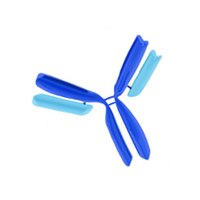PC342 Sigma-AldrichAnti-MMP-2 (Ab-7) Rabbit pAb
Recommended Products
Overview
| Replacement Information |
|---|
Key Spec Table
| Species Reactivity | Host | Antibody Type |
|---|---|---|
| H, M | Rb | Polyclonal Antibody |
| Product Information | |
|---|---|
| Form | Liquid |
| Formulation | In 1X PBS, 0.2% BSA. |
| Positive control | Conditioned medium from HT-1080 cells or recombinant MMP-2 |
| Preservative | ≤0.1% sodium azide |
| Quality Level | MQ100 |
| Physicochemical Information |
|---|
| Dimensions |
|---|
| Materials Information |
|---|
| Toxicological Information |
|---|
| Safety Information according to GHS |
|---|
| Safety Information |
|---|
| Product Usage Statements |
|---|
| Packaging Information |
|---|
| Transport Information |
|---|
| Supplemental Information |
|---|
| Specifications |
|---|
| Global Trade Item Number | |
|---|---|
| Catalogue Number | GTIN |
| PC342 | 0 |
Documentation
Anti-MMP-2 (Ab-7) Rabbit pAb SDS
| Title |
|---|
Anti-MMP-2 (Ab-7) Rabbit pAb Certificates of Analysis
| Title | Lot Number |
|---|---|
| PC342 |
References
| Reference overview |
|---|
| Nikkari, S.T., et al. 1996. Am. J. Pathol. 149, 1427. Soini, Y., et al. 1994. J. Histochem. And Cytochemistry 42, 945. Autio-Harmainen, H., et al. 1993. Lab. Invest. 69, 312. Cottam, D.W. and Rees, R.C. 1993. Intl J. Oncol. 2, 861. Schnaper, H.W., et al. 1993. J. Cell. Physiol. 156, 235. Stetler-Stevenson, W.G., et al. 1993. FASEB J. 7, 1434. Autio-Harmainen, H., et al. 1992. Lab. Invest. 67, 191. Fridman, R., et al. 1992. J. Biol. Chem. 267, 15398. Margulies, I.M., et al. 1992. Cancer Epidemiology, Biomarkers and Prevention 1, 467. Woessner, J.F. 1991. FASEB J. 5, 2145. Liotta, L.A. and Stetler-Stevenson, W.G. 1990. in Seminars in Cancer Biology, ed. M.M. Gottesman. Vol. 1(2), 99. |







